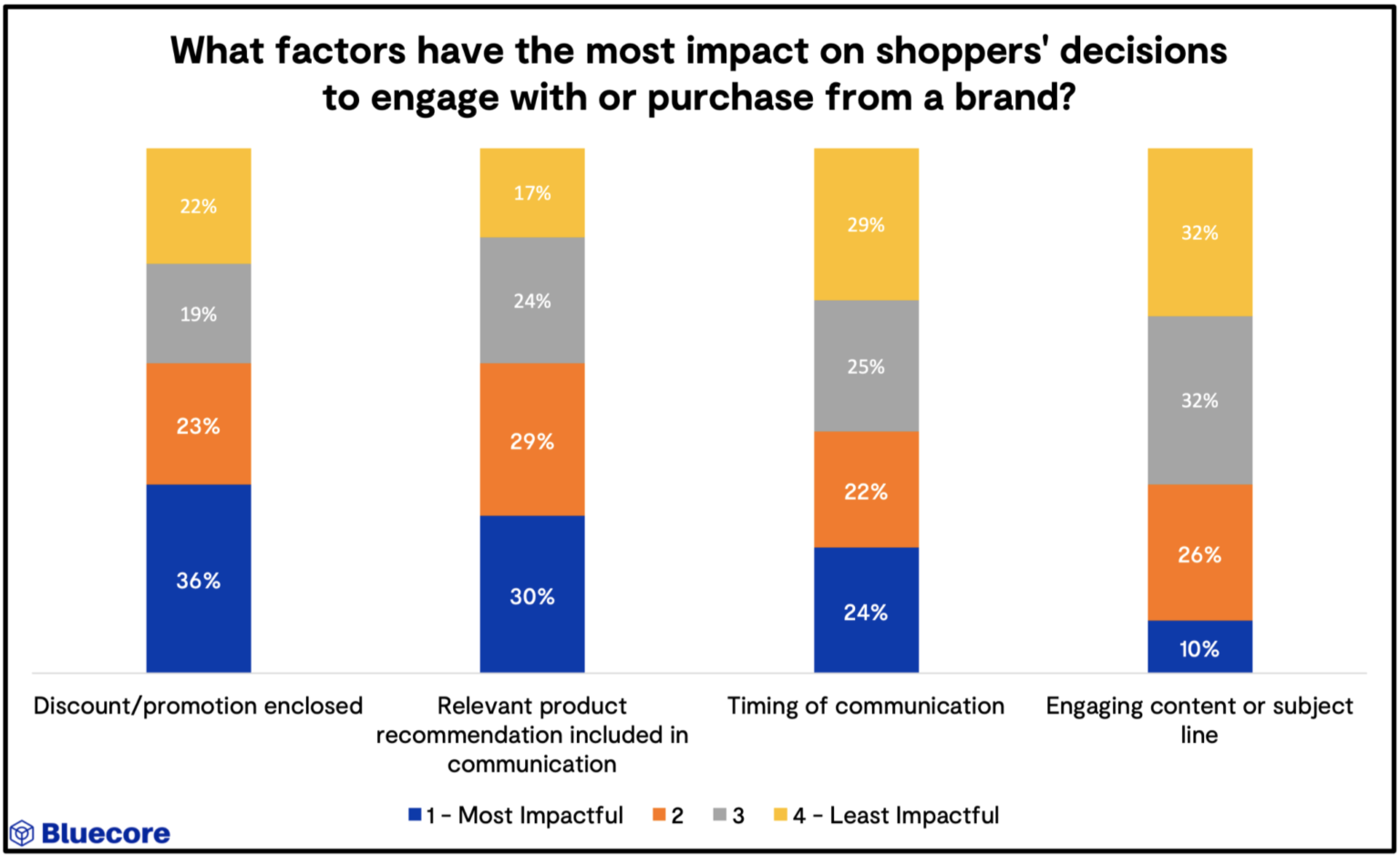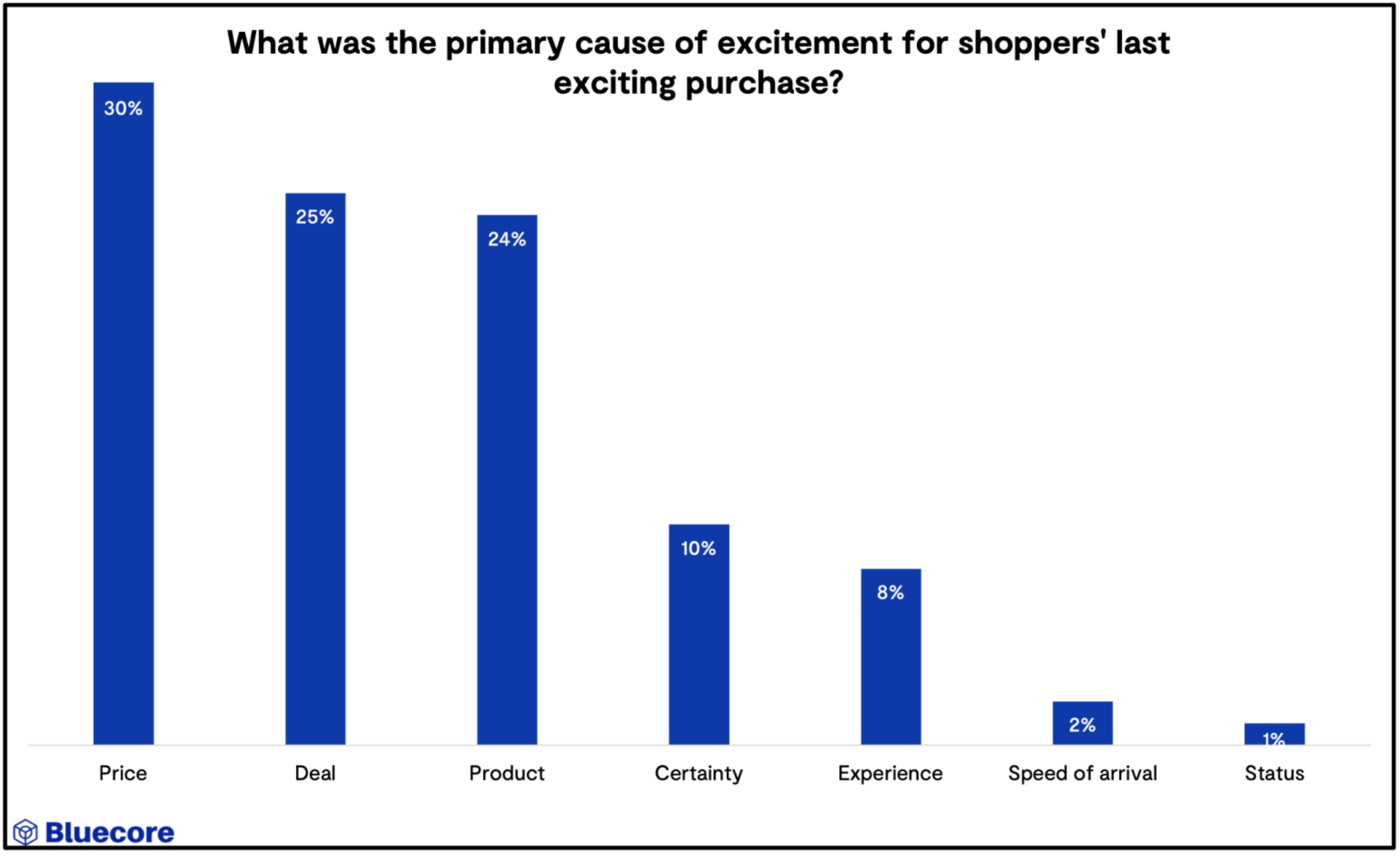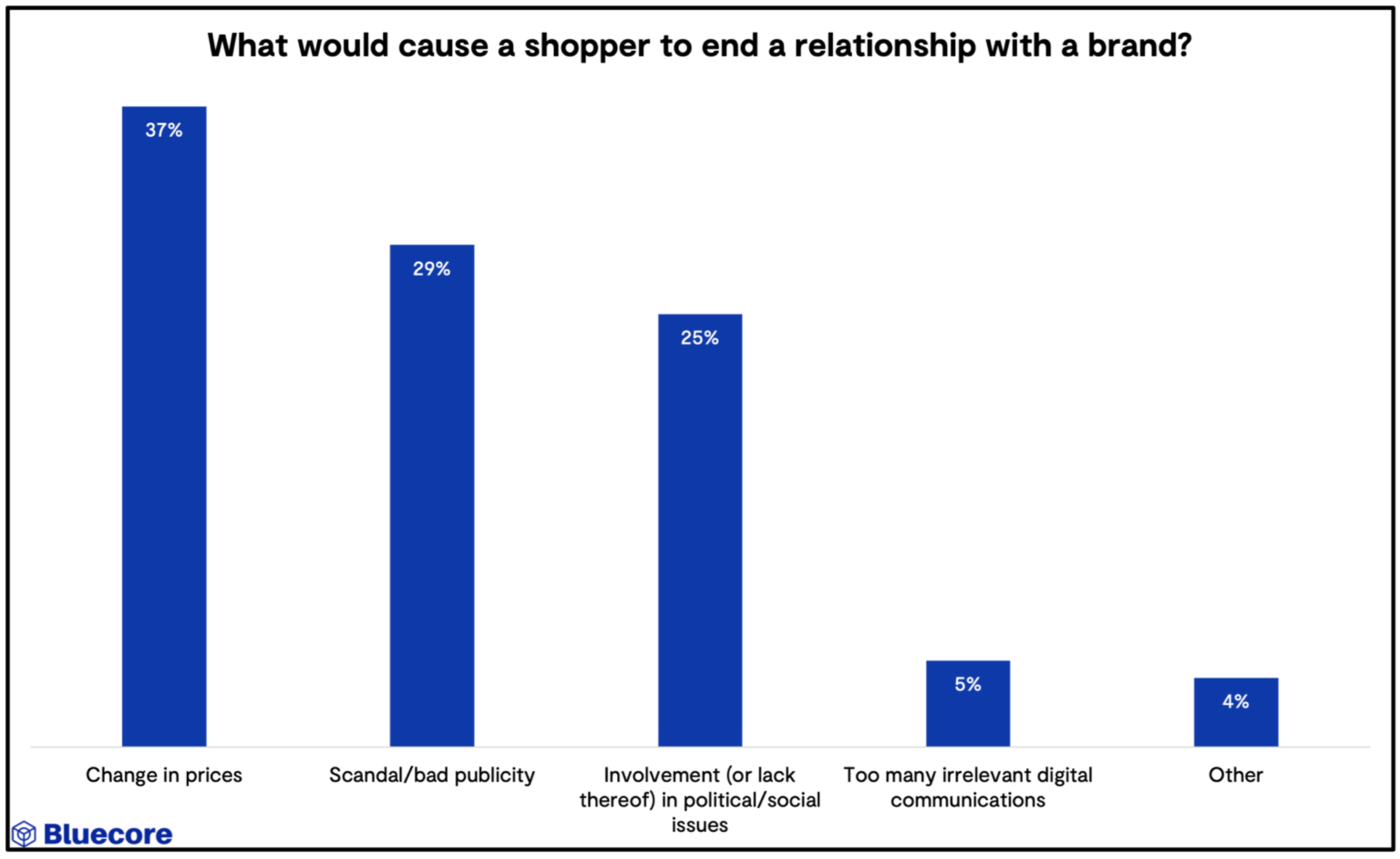
3 Ways to Drive More eCommerce Sales with Fewer Discounts
Every brand aims to be customer-centric – but what does that actually mean?
True customer-centricity goes much deeper than simply sending consistent communications to your shoppers. Marketers need to first understand what customers want to see from their brands and deliver value accordingly.
With brands competing in an all-DTC world, it’s easy to implement a sitewide sale in order to drive conversions, but in reality, shoppers care more about unique value to them. While 57% of shoppers cite price as the biggest impact on their purchase decisions, not everyone is looking for a discount: in fact, 64% are influenced by factors other than discounts when they engage with brands.
So rather than discounting to drive purchases, brands need to understand what shoppers value on a 1:1 basis and personalize communications accordingly. Identifying what matters to your shoppers and, more specifically, their unique preferences is key to getting repeat purchases, cultivating loyal shoppers, improving customer stickiness and driving profitability.
To better understand the behavior of today’s shoppers and help inform brands’ strategies, Bluecore surveyed 522 U.S. online shoppers over the course of a two week period in the first half of 2021 on how price dictates how shoppers perceive and engage with brands. Here are three strategies to keep in mind when communicating with customers to provide them the most value.
1. Only surface discounts to shoppers who need them to convert

What the survey says
Shoppers have varying priorities when engaging with brands. 36% of shoppers cite discounts as the biggest factor influencing if they engage with communication from a brand, which means 64% prioritize other aspects, like recommendations, subject lines, and timing.
What your brand should do
Figure out who needs a discount to convert and who doesn’t. This starts with your customer data: more specifically, marrying shopper data to product data to determine affinities including toward certain categories or discounts, and then selectively surfacing discounts to only shoppers who need them to convert. This automatically makes touchpoints with your customers more relevant and also prevents you from wasting marketing dollars on digital communications that don’t land or providing discounts to those who don’t need them to convert. This protects your bottom line while driving more revenue.
2. Surface products that are frequently sold at full-price

What the survey says
Attributes that are more utilitarian, like price, deal, and product, generate more excitement than emotional attributes like experience and status. The majority of shoppers are most excited by paying a good price.
What your brand should do
Remember, a good price does not equal the cheapest price. Think of price as a representation of value: a higher ticket item is an asset that provides value to a shopper, and a good deal makes a shopper feel like they’re getting more than enough value out of what they paid.
Take a look at your product catalogue and determine what products are often being bought at full price. These “hidden gems” are great products to surface to other shoppers who may be interested in them. Encouraging full price purchases is an easy way to drive profitability, while also showing shoppers you know them by sharing relevant products.
3. Commit to your brand’s mission and clearly communicate it to shoppers

What the survey says
Over a majority (54%) of shoppers surveyed would break up with a brand over a scandal or their involvement (or lack thereof) in political and social issues, whereas only about a third would end a relationship with a brand because of price changes.
What this means for your brand
Informed shoppers are proactive, often engaging with your content and seeking value — which isn’t always a discount. Because of the connection they feel to your brand, they’re willing to pay full-price for products, making them your brand’s most valuable asset.
What does your eCommerce brand stand for?
Identify who your informed shoppers are and ensure they’re aware of what your brand stands for. This will not only cultivate long-term loyalty and build advocates who view your brand as an extension of themselves, but also enable you to breed a cohort of shoppers you can guarantee will pay full price for your products.
In a digital-first world, putting the shopper first is the most important thing your brand can do to get shoppers to buy more and drive profitability for your brand, especially given today’s competitive digital landscape. Before implementing sitewide sales, take time to understand who your shoppers are and what they value. This will require certain capabilities within your martech stack starting with connecting and activating shopper and product data to determine shopper preferences.




